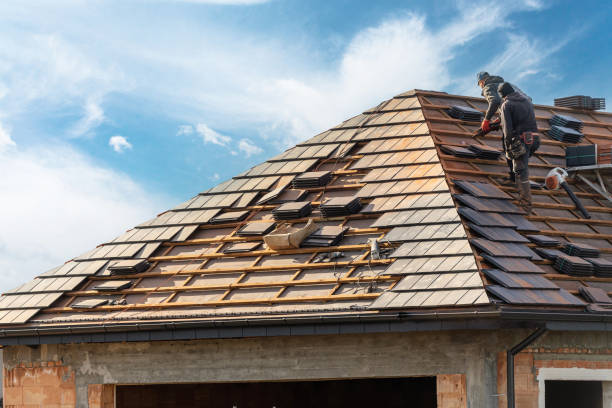A roof replacement is one of the most significant investments a homeowner can make. It protects your property from weather damage, helps maintain energy efficiency, and adds to the overall value of your home. Many homeowners feel overwhelmed at the thought of taking on such a large project, yet with the right preparation and guidance, the process can move forward with far less stress. By understanding the steps involved and working with trusted experts, you can move through this transition confidently and with peace of mind.
Hire Experienced Professionals
The foundation of a successful roof replacement lies in selecting the right team to handle the project. Homeowners sometimes consider attempting repairs themselves or hiring low-cost labor, but roofing demands skill, precision, and industry knowledge that only experts can provide. Choosing contractors who specialize in professional roofing services ensures that every stage, from inspection to installation, is handled correctly. This decision reduces the risk of mistakes, protects warranties, and guarantees the use of appropriate materials. It also provides access to trained workers who understand safety procedures and adhere to building codes. A skilled roofing team will not only deliver reliable results but also keep the homeowner informed throughout the process.
Conduct a Thorough Roof Inspection
Before any replacement begins, a detailed inspection is crucial to determine the exact condition of the current roof. This step identifies hidden damage, such as rotting underlayment or weakened decking, that may not be visible from the ground. A professional inspection allows the contractor to create an accurate estimate and timeline. It also helps avoid costly surprises once the project is underway. By taking the time to assess every layer of the roof, from shingles to flashing, you gain clarity on what truly needs to be replaced. This preparation ensures that the new roof is not just a cosmetic upgrade but a long-term solution that addresses underlying issues.
Choose the Right Materials
Selecting the best materials for your new roof is one of the most impactful decisions in the process. Asphalt shingles remain a popular choice for their affordability and variety, while metal, tile, or slate may appeal to those seeking durability and distinctive appearance. Each option carries different benefits in terms of longevity, energy efficiency, and maintenance requirements. A reputable contractor can walk you through the pros and cons of each material, helping you balance budget with performance. Homeowners should also consider climate conditions, as certain materials fare better in particular environments. Choosing wisely at this stage ensures that the new roof not only looks appealing but also performs reliably for decades.
Prepare Your Home and Surroundings
Roof replacement is a disruptive project, so preparation is key to protecting both your property and daily routine. Clearing the driveway and yard allows contractors easy access and provides space for equipment and debris disposal. Inside the home, vibrations from the work can shake loose fragile items, so removing valuables from shelves or walls is recommended. Covering items in the attic with tarps helps shield them from dust and debris. Communicating with neighbors ahead of time about the upcoming work is a thoughtful step to avoid unnecessary conflict. Proper preparation minimizes inconvenience and ensures the crew can focus fully on completing the job efficiently.
Understand the Project Timeline
Homeowners often wonder how long a roof replacement will take. The answer depends on the size of the house, the complexity of the design, and the chosen materials. A straightforward asphalt shingle replacement might be finished in a few days, while more intricate roofs with custom features can extend over a week. Weather conditions also play a major role, as rain or high winds can halt progress. Staying informed about the timeline helps set realistic expectations and reduces stress during the project. A professional contractor will communicate updates regularly and adjust the schedule as needed, keeping the homeowner in the loop at every stage.
Review Warranties and Maintenance Plans
Once the new roof is installed, the job is not entirely finished. Homeowners should review the warranties provided by both the manufacturer and the contractor. Material warranties cover defects, while workmanship warranties address the quality of installation. Knowing what each warranty includes protects your investment and offers peace of mind for years to come. In addition, discussing maintenance plans with your roofing contractor can help extend the life of your roof. Regular inspections and minor repairs prevent small problems from escalating into costly damage. A well-maintained roof delivers long-term performance, safeguarding both the home and the homeowner’s budget.
A roof replacement is no small project, but with careful planning, clear communication, and the right professionals, it can be a positive experience. From hiring skilled contractors to selecting durable materials and preparing your property, each step plays a role in creating a lasting result. Understanding the process helps reduce stress, avoid unexpected delays, and protect your investment. When handled properly, a new roof not only secures your home but also adds comfort, efficiency, and long-term value.
Published by HOLR Magazine.




